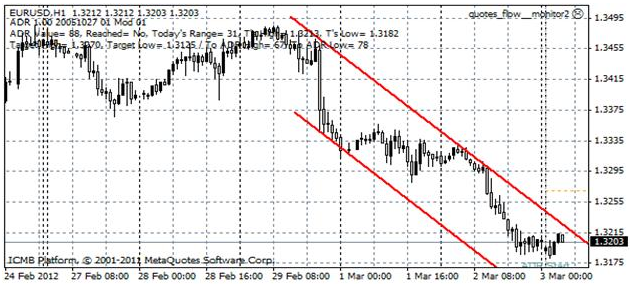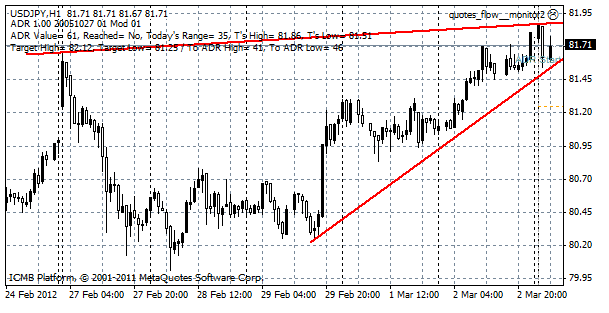The European Union faces a first test in its attempt to turn the page on the two-year debt crisis when Greece’s private creditors decide this week whether to sign off on the biggest sovereign-debt restructuring in history. The success of the 106 billion-euro ($140 billion) debt swap, confirmed on the eve of last week’s European Union summit, depends on how many investors agree to the writedown by the March 8 deadline. Euro-area finance ministers will hold a teleconference on March 9 to review the deal’s outcome. “The European crisis is not quite over yet,” Erik Nielsen, chief global economist at UniCredit SpA in London, wrote in a note to clients yesterday. He said enough creditors will probably participate in the writedown to avoid triggering so-called collective action clauses, which could be used by Greece to compel investors to participate and roil markets by triggering credit-default swap insurance contracts. The Greek government has set a 75 percent participation rate as a threshold for proceeding with the transaction, in which investors will forgive 53.5 percent of their principal and exchange their remaining holdings for new Greek government bonds and notes from the European Financial Stability Facility. Euro- area finance ministers last week authorized the EFSF to issue bonds for the swap. Leaders of the European Union last week said their focus will shift away from budget-cutting to growth measures after completing the details of a second Greek bailout package. Whether that 130 billion-euro package can proceed will depend on the outcome of this week’s swap. EUR/USD" title="EUR/USD" width="641" height="291">
EUR/USD" title="EUR/USD" width="641" height="291">
GBP/USD
The pound fell sharply against the U.S. dollar on Friday, trimming the week’s gains as fresh concerns over the debt crisis in the euro zone weighed, while diminished expectations for fresh U.S. monetary easing also boosted the dollar. GBP/USD hit 1.5991 on Wednesday, the pair‚s highest since November 14; the pair subsequently consolidated at 1.5833 by close of trade on Friday, gaining 0.31% over the week. Concerns over the impact of the euro zone‚s debt crisis on the region‚s economy resurfaced on Friday after official data showed an unexpected drop in German retail sales in January. Market sentiment was further hit after debt-strapped Spain raised its budget deficit target to 5.8% of gross domestic product for 2012, compared to a previous target of 4.4%. The pound touched a three-and-a-half month high against the greenback on Wednesday, after the European Central Bank allotted EUR529.5 billion in loans to 800 lenders in its second long-term refinancing operation, boosting demand for higher-yielding assets. However, the greenback subsequently rebounded amid concerns that the action was equivalent to quantitative easing. The greenback also found support after Federal Reserve Chairman Ben Bernanke dampened expectations for a third round of quantitative easing, when he acknowledged the recent improvement in the U.S. labor market and said that higher oil prices could push up inflation. The remarks came after the U.S. Commerce Department reported that gross domestic product increased at a seasonally adjusted annual rate of 3.0% during the fourth quarter, up from a preliminary estimate of 2.8%. The pound remained supported against the euro as investors trimmed back expectations for a fresh round of easing by the Bank of England after central bank Governor Mervyn King said Wednesday that policymakers would be guided by upcoming economic data when deciding whether to implement more stimulus measures. Meanwhile, data on Thursday showed that the manufacturing sector in the U.K. expanded in February, albeit at a slightly slower-than-forecast pace, adding to hopes that the sector will fuel overall economic growth in the first quarter. In the week ahead, investors will be looking ahead to Friday‚s data on U.S. non-farm payrolls, to gauge the strength of the country‚Äôs economic recovery. Market participants will also be continuing to watch developments in Europe, ahead of interest rate announcements by the ECB and the BoE on Thursday. GBP/USD" title="GBP/USD" width="608" height="313">
GBP/USD" title="GBP/USD" width="608" height="313">
USD/JPY
The U.S. dollar rallied to a nine-month high against the yen on Friday, after data showing that Japan’s economy is still struggling with deflation prompted the country’s bank to reaffirm a commitment to loose monetary policy. USD/JPY hit 81.86 on Friday, the pair’s highest since May 26; the pair subsequently consolidated at 81.79 by close of trade, gaining 0.67% over the week. The pair is likely to find support at 81.06, Friday’s low and short-term resistance at 82.21, the high of May 24. The yen’s losses came after official data showed that Japanese consumer price inflation declined by an annualized 0.1% in January, indicating that mild deflation remains a risk for the economy. Following the data, Bank of Japan Governor Masaaki Shirakawa reiterated the bank’s commitment to achieve a 1% rise in the rate of CPI by keeping monetary policy loose. The yen has been under pressure since last month’s surprise decision by the BoJ to increase the size of the bank’s asset purchase program by JPY10 trillion and target a 1% inflation goal. The dollar strengthened broadly on Wednesday, after Federal Reserve Chairman Ben Bernanke dampened expectations for a third round of quantitative easing. In testimony to Congress, Bernanke acknowledged the recent improvement in the labor market and said that higher oil prices could push up inflation. The remarks came after the U.S. Commerce Department reported that gross domestic product increased at a seasonally adjusted annual rate of 3.0% during the fourth quarter, up from a preliminary estimate of 2.8%. Other reports last week continued to paint a mixed picture of the U.S. economic recovery. Data on Tuesday showed that U.S. durable goods orders dropped to a three-year low in January.  USD/JPY" title="USD/JPY" width="609" height="313">
USD/JPY" title="USD/JPY" width="609" height="313">
USD/CAD
Canada’s dollar strengthened the most since January versus its U.S. counterpart on speculation accelerating global growth will boost the nation’s exports, bolstering the case for interest-rate increases.
The Canadian currency was the best performer this week against 14 of its 16 most-traded counterparts as the price of crude oil, the country’s biggest export, touched the highest level since 2008. Jobless-insurance claims fell and consumer confidence rose in the U.S., the nation’s biggest trade partner. Bank of Canada policy makers meet next week. “Positive sentiment across global markets was the big driver for the Canadian dollar,” said Blake Jespersen, director of foreign exchange at Bank of Montreal in Toronto. “The improving U.S. economy and rising oil prices are helping.” The loonie, nicknamed for the image of the aquatic bird on the C$1 coin, advanced 1 percent to 98.93 cents per U.S. dollar yesterday in Toronto, from 99.93 cents on Feb. 24. It was the biggest five-day gain since Jan. 27. The currency touched 98.42 cents on March 1, the strongest since September, before snapping a four-day winning streak yesterday. One Canadian dollar buys $1.0108. Longer-term government bonds rose, pushing the yield on the benchmark 10-year note down six basis points, or 0.06 percentage point, to 1.96 percent. The yield reached 1.837 percent in December, a record low. Yields on Canada’s two-year note gained three basis points to 1.11 percent. They touched 1.13 percent on March 1, the highest level since Oct. 28. USD/CAD" title="USD/CAD" width="611" height="312">
USD/CAD" title="USD/CAD" width="611" height="312">
- English (UK)
- English (India)
- English (Canada)
- English (Australia)
- English (South Africa)
- English (Philippines)
- English (Nigeria)
- Deutsch
- Español (España)
- Español (México)
- Français
- Italiano
- Nederlands
- Português (Portugal)
- Polski
- Português (Brasil)
- Русский
- Türkçe
- العربية
- Ελληνικά
- Svenska
- Suomi
- עברית
- 日本語
- 한국어
- 简体中文
- 繁體中文
- Bahasa Indonesia
- Bahasa Melayu
- ไทย
- Tiếng Việt
- हिंदी
Major Currency Pairs Analysis: March 05, 2012
Published 03/05/2012, 06:32 AM
Updated 04/25/2018, 04:40 AM
Major Currency Pairs Analysis: March 05, 2012

ICM Brokers
EUR/USD
3rd party Ad. Not an offer or recommendation by Investing.com. See disclosure here or
remove ads
.
Latest comments
Install Our App
Risk Disclosure: Trading in financial instruments and/or cryptocurrencies involves high risks including the risk of losing some, or all, of your investment amount, and may not be suitable for all investors. Prices of cryptocurrencies are extremely volatile and may be affected by external factors such as financial, regulatory or political events. Trading on margin increases the financial risks.
Before deciding to trade in financial instrument or cryptocurrencies you should be fully informed of the risks and costs associated with trading the financial markets, carefully consider your investment objectives, level of experience, and risk appetite, and seek professional advice where needed.
Fusion Media would like to remind you that the data contained in this website is not necessarily real-time nor accurate. The data and prices on the website are not necessarily provided by any market or exchange, but may be provided by market makers, and so prices may not be accurate and may differ from the actual price at any given market, meaning prices are indicative and not appropriate for trading purposes. Fusion Media and any provider of the data contained in this website will not accept liability for any loss or damage as a result of your trading, or your reliance on the information contained within this website.
It is prohibited to use, store, reproduce, display, modify, transmit or distribute the data contained in this website without the explicit prior written permission of Fusion Media and/or the data provider. All intellectual property rights are reserved by the providers and/or the exchange providing the data contained in this website.
Fusion Media may be compensated by the advertisers that appear on the website, based on your interaction with the advertisements or advertisers.
Before deciding to trade in financial instrument or cryptocurrencies you should be fully informed of the risks and costs associated with trading the financial markets, carefully consider your investment objectives, level of experience, and risk appetite, and seek professional advice where needed.
Fusion Media would like to remind you that the data contained in this website is not necessarily real-time nor accurate. The data and prices on the website are not necessarily provided by any market or exchange, but may be provided by market makers, and so prices may not be accurate and may differ from the actual price at any given market, meaning prices are indicative and not appropriate for trading purposes. Fusion Media and any provider of the data contained in this website will not accept liability for any loss or damage as a result of your trading, or your reliance on the information contained within this website.
It is prohibited to use, store, reproduce, display, modify, transmit or distribute the data contained in this website without the explicit prior written permission of Fusion Media and/or the data provider. All intellectual property rights are reserved by the providers and/or the exchange providing the data contained in this website.
Fusion Media may be compensated by the advertisers that appear on the website, based on your interaction with the advertisements or advertisers.
© 2007-2024 - Fusion Media Limited. All Rights Reserved.